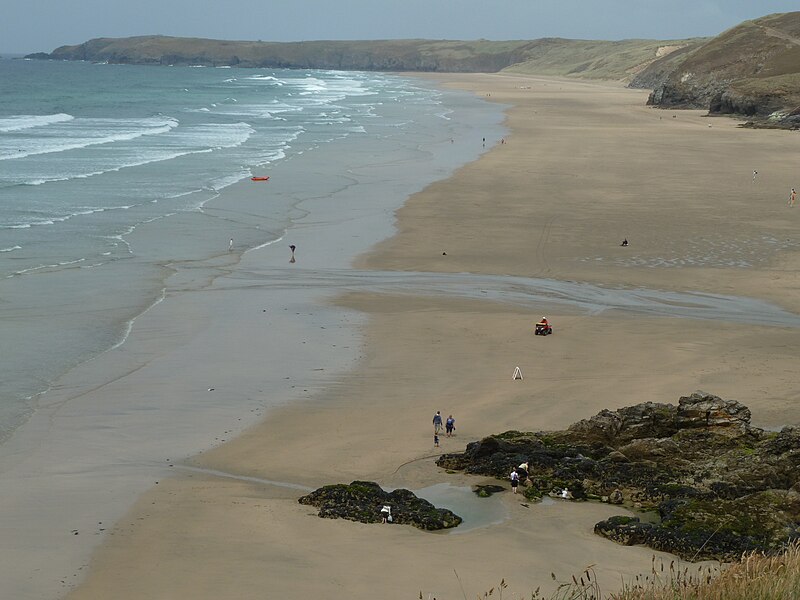This was the case in 1911, when the Norwegian barque Saluto, on its way to Barbados, got into difficulties off the Isles of Scilly. The Captain wisely decided to head for Falmouth, but on the way there came to grief off Cudden Point near Perranuthnoe. However, help was at hand in the form of the Newlyn lifeboat Elizabeth and Blanche, which carried out the rescue with such military precision that the operation was completed in an hour and a half, watched by an appreciative crowd of onlookers.
Today, Perranuthnoe is a relatively unspoilt spot on the Cornish coast, affording a view of St Michaels Mount from a different angle from the well-worn one used in tourist promotions. The area around the village is fascinating to students of prehistory. The names of the fields surrounding the village suggest Bronze Age and Roman settlement. Visitors to the lovely sheltered beach, otherwise known as Perran Sands, which is listed among the top 10 surfing beaches in Cornwall, should check the tide tables, as there is not much of it at high tide.
Live streaming webcam view of Perran.
Map of the area.
Map of the area.
 |
View of Perran Sands. Photo by Worm That Turned, via Wikimedia Commons.
|
No comments:
Post a Comment